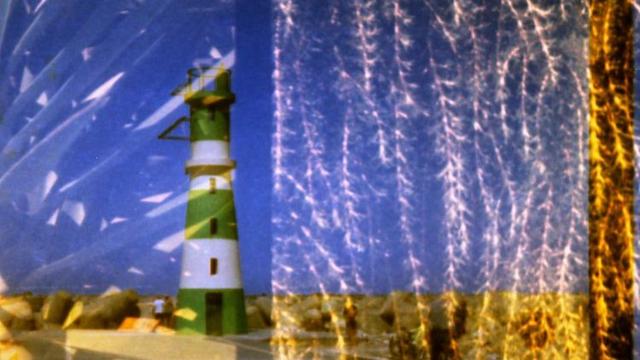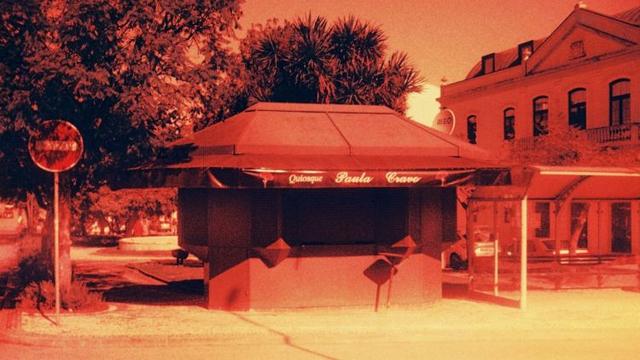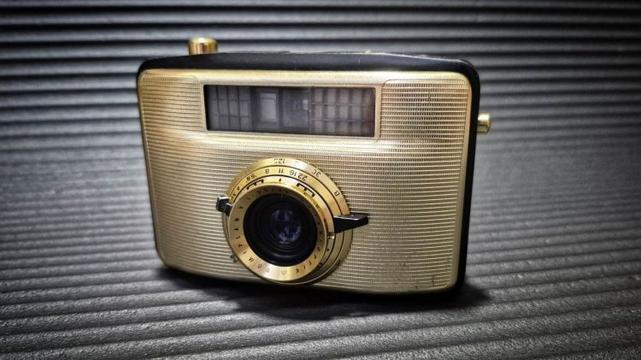The #FrugalFilmProject, September 2025: The One Where We Tried To Expose Both Sides (Again)
This post has been sitting in my draft folder since the middle of September, and I’ve just realised that I haven’t posted it, and it’s now October. Oops! I had actually submitted one of the images for the World Wide Half Frame Photography Day, and I guess that with all that was going on, this post just slipped through the cracks. A couple of months ago on the Frugal Film Project, I tried something different: EBS photography, or Expose Both Sides. This is exactly what it sounds like, first exposing a film normally in the camera — with the emulsion side facing the subject — and then reversing the film, reloading it back into the camera, and exposing the whole film again — this time with the emulsion side facing away from the subject.
It didn’t go well. Even though I marked the film carefully, somehow I managed to get the alignment completely wrong, so the frames on each side of the film were not lined up. In fact they were almost precisely 50% off, so there was a big band down the centre of the ‘normal’ exposure which was the ‘between frames’ unexposed part of the film of the redscaled exposure. However, this made me all the more determined, and I really wanted to try the technique again. I read somewhere that it’s better to expose the redscaled side first, and then to expose normally for the second exposure. So this time I decanted some Harman Red film into a Rapid canister and loaded this into the Golden Wonder. The pre-production Harman Red I have is actually Harman Phoenix spooled backwards. In fact, within the sprockets it even says Harman Phoenix, so I feel this certainly counts towards the Frugal Film Project.
As before, I marked the position of the film gate, and this time, since I reckon this was one of the reasons the film didn’t line up the first time, I also marked the position on the film of the little tabs that engage the sprockets and push the film into the empty canister. My subject was street art, so with the redscale side I took a close-up of a series of pieces of street art around Aveiro. Once the film was finished, I decanted this into another Rapid canister, with the emulsion side facing the subject, and lined up the film with the markings on the other side (remembering to make sure that the position of the little tabs matched, too). I then retraced my route, taking photographs of the same pieces of street art, but this time at a distance.
When taking the photos for the second series of exposures I held the camera upside down so that the orientation of the images on both sides would be in the same direction, although I did forget this a couple of times. On completion, the film was taken to Forever Blue in Aveiro and scanned at home with an Epson Perfection v750 Pro flat bed scanner and Epson Scan software. This time, the frames on both sides were almost perfectly lined up, which was excellent. Unfortunately, both the ‘redscaled’ exposure and regular exposures were well overexposed. I had tried to underexpose the exposures on each side by 1-stop, but clearly it didn’t work, and I’m thinking that Harman Phoenix, with a box speed of ISO 200, is just too fast for EBS with the Welta Penti II half-frame Rapid camera.
After my initial disappointment with the images, I wasn’t sure what I got, and I was confused and a little deflated with the results, on repeating viewings I became a little happier with what I had achieved. The images took on a really ‘painterly’ effect, almost not a photograph at all, and I really liked that. The colours were all over the place, I wasn’t sure if that was because of the scanning or what, but the overall effect was pleasing. I’m going to try it again, but this time with a slower film, and perhaps not trying to overlap with the same pieces of street art each time.I’ve posted the whole roll in an album (https://www.flickr.com/gp/147583812@N06/QBYW5KMxg8) on my Flickr, light leaks and all, if you want to see the rest of the images.
If you are on Mastodon, you can now follow this blog directly. Just go to Mastodon and follow the ‘Snapshot’ WordPress account at @keithdevereux.wordpress.com. All new posts will be automatically updated to your timeline.
#AgfaRapid #Art #FrugalFilmProject #Graffiti #HalfFrame #HarmanPhoenix #Mural #Penti2 #Rapid #RapidFilm #Redscale #Streetart #Welta #EBS #ExposeBothSides #URBAN #WWHFPD25




